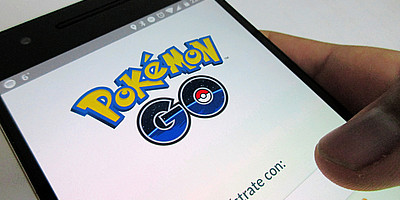Gamification and Pokemon GO

The Pokemon video game turns 20 years old this year. What better way to celebrate than launching a beta app that doubled their shares in two weeks? There is no doubt that Pokemon Go is a success among users, given that every second approximately 60 people download the app. Regardless of the opinions of those who love and hate the game, there are social factors behind its success that are worth analyzing. Cristian López, Ph.D. from UNAM, and author of various articles about the relationship between videogames and society, says that Pokemon Go’s success is related to some factors, one of them being that the video game was a hit in the past.
Pokemon Go is an app designed with hybrid technologies that combine reality with video gaming, is an augmented reality app. Augmented reality is the term used to describe the intertwining of real images with virtual elements that modify reality in a greater or lower extent.
For López, the Pokemon Go boom is something expected considering that Nintendo is one of the biggest companies in the industry. Moreover, this company is known for its tendency to be on the lead in using alternative technologies in video games, demonstrated by the release of Nintendo Wii or Nintendo Color. While other companies try to be cautious, Nintendo tries to be strongly involved.
This type of technology had already been used by Nintendo Wii before, but now it was kicked up a notch. In the past this technology used to invite you to move in your own space, to go into videogame reality. Now, it pushes you to move around common spaces and walk around the city. Now it’s videogames that come into your reality, inviting you to live in it.
The success of Pokemon Go can be related to the human trend to enjoy the game. Gamification is the exact phenomenon that can explain the success of Pokemon Go. It refers to the use of techniques, dynamics and elements of the game to encourage behaviors and codes in a specific social context. Simply put, it brings life into daily scenarios that would normally be known as “dead or idle time”: walking around the city, riding public transpotation, waiting for the elevator, etc., and gives them an extraordinary touch through the game while getting different reactions and behaviors from people.
For instance if we try to get people to stop using escalators and we decide to install a piano on the steps of regular stairs, we could use the time that people take to go up or down the stairs and turn it into a game, and we could change the habit of using escalators instead of regular stairs.
The truth is that people like to play games and López thinks this is something that Nintendo knows and they contribute to this. Pokemon Go is a rather simple app, considering it’s design vs. it’s applications. According to gamer taxonomy, in the game industry there are hardcore players and casual players. Hardcore players know their consoles, video games and they play and they play well. A casual player plays only once in a while and doesn’t know the industry that well. Needless to say, this was the bigger market that Nintendo wanted to shoot for, and what they intended to do with Pokemon go.
Furthermore, Nintendo is addressing different generations of players with Pokemon Go, according to Cristian López. Through retrogaming, which means going back to relatively old games and renewing them, Nintendo secures a bigger market and creates an intergenerational market. Pokemon is something known by several generations, therefore Pokemon Go is an opportunity to connect new generations with the first ones, enjoying the same concept with new forms.
Pokemon Go can be considered a milestone in video game history, since it is the first hit outside the consoles that allows exploring markets that had not been explored before. Cristian López states that Pokemon Go connects people to an extent that video games have never done before: common reality. It is a new communication link, both online and offline. It is interesting that a technology that used to detach people now brings them together offline.